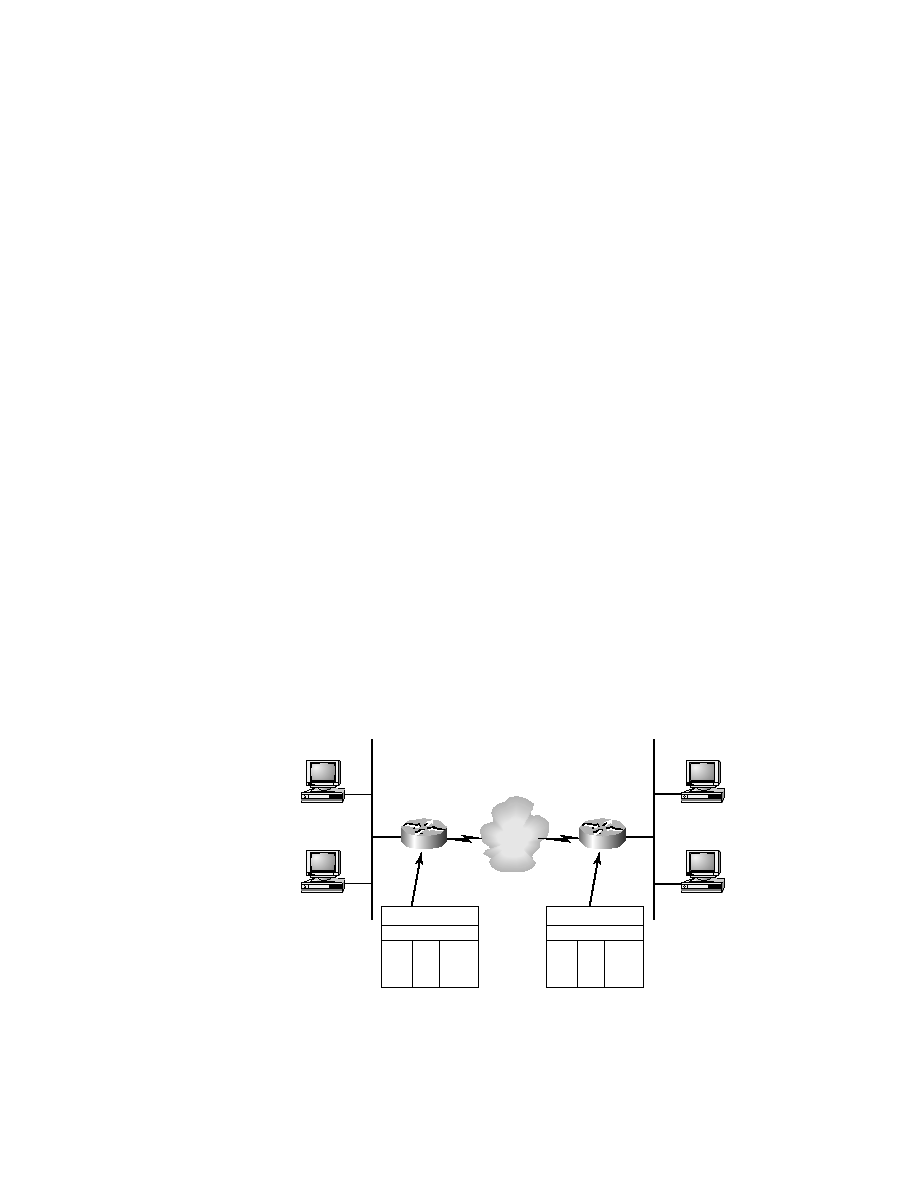
devices that aren't locally attached. Routers (layer-3 devices) are specified at
the Network layer and provide the routing services within an internetwork.
particular router, it will look up the destination network address in the
routing table. Once the router chooses an exit interface, the packet will be
sent to that interface to be framed and sent out on the local network. If the
router can't find an entry for the packet's destination network in the routing
table, the router drops the packet.
Protocols used to support data traffic are called routed protocols; exam-
ples of routed protocols are IP and IPX. You'll learn about IP addressing
in Chapter 3 and IPX addressing in Chapter 8.
networks connected to all routers within the internetwork. Protocols that
send route update packets are called routing protocols; examples of some
common ones are RIP, EIGRP, and OSPF. Route update packets are used
to help build and maintain routing tables on each router.
0
1
S0
S0
2
3
0
0
S0
E0
2
3